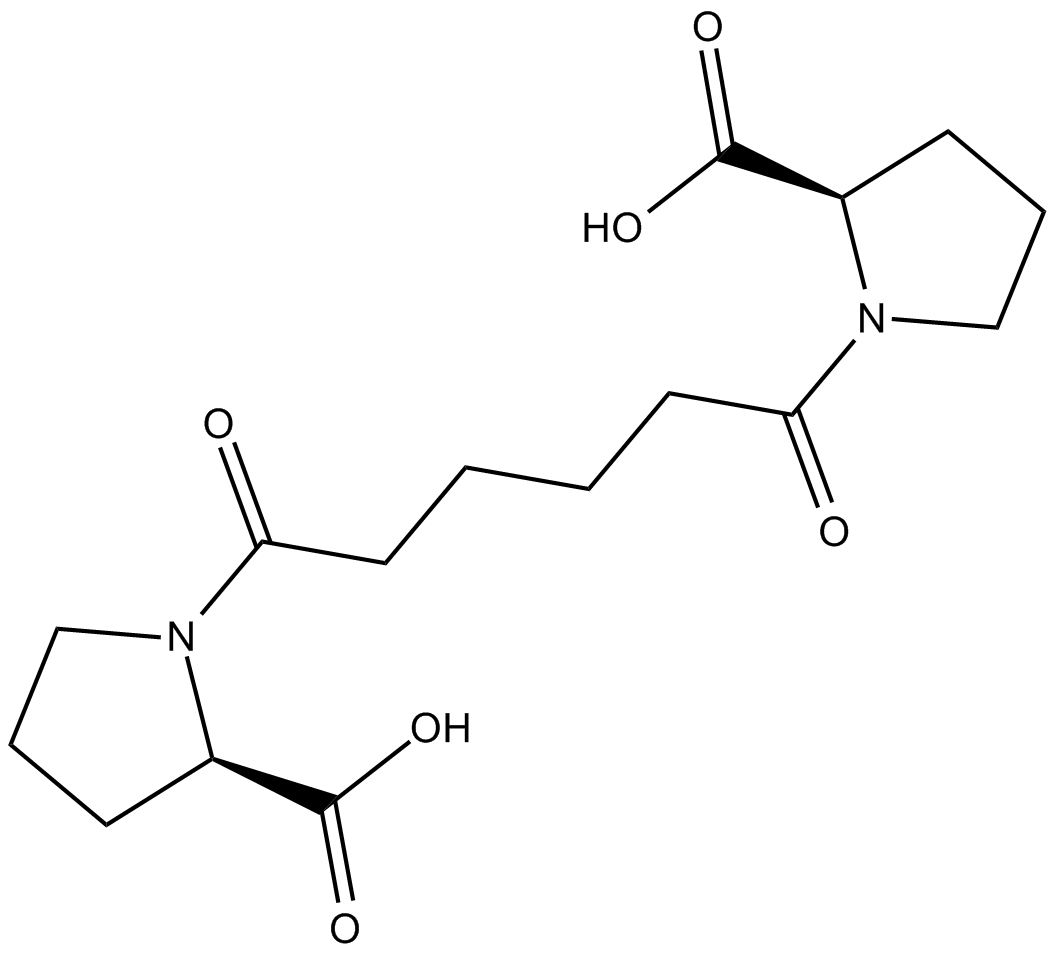CPHPC (Synonyms: Ro 63-8695|GSK2315698) |
| Catalog No.GC14828 |
CPHPC is a ligand for serum amyloid P component (SAP) and intends to inhibit and dissociate SAP binding to amyloid fibrils and tangles.
Products are for research use only. Not for human use. We do not sell to patients.

Cas No.: 224624-80-0
Sample solution is provided at 25 µL, 10mM.
CPHPC is used with anti-SAP antibodies to eliminate amyloid deposits.
The amyloid deposits causing disease in systemic amyloidosis contain the normal plasma protein, serum amyloid P (SAP) component. SAP is the target of a novel immunotherapy approach being developed to eliminate amyloid deposits.
In vitro: Previous study found that the multi-point binding of CPHPC between pairs of pentameric SAP molecules increased the avidity of the interaction, and this was reflected in an apparent affinity constant of 10 nM. Moreover, the X-ray crystal structure of the SAP–CPHPC complex confirmed that it was a decamer composed of two pentameric SAP molecules reversibly crosslinked by five CPHPC molecules [1].
In vivo: Mice were received CPHPC at 1 mg/ml in their drinking water for the rest of the experiment. Circulating human SAP was depleted but significant amounts of SAP remained in the amyloid deposits. Five days after starting on CPHPC, one group received a single intraperitoneal injection of 50 mg of the IgG fraction of sheep anti-human SAP antiserum, containing 7 mg of anti-SAP antibody. A control group received 50 mg of unrelated sheep IgG. The third group received no treatment and thus controlled for spontaneous regression of AA amyloid. Results showed that there was dramatically less amyloid after treatment with CPHPC plus anti-SAP antibody than in the other two groups but there was no difference between CPHPC alone and no treatment [2].
Clinical trial: In a first, exploratory, open label proof of principle study, it was found that CPHPC produced sustained, >95% depletion of circulating SAP in all patients. There were no significant adverse effects of either SAP depletion or CPHPC itself. No accumulation of amyloid was demonstrable by SAP scintigraphy in any patient on the drug. In hereditary fibrinogen amyloidosis, proteinuria was reduced in four of five patients receiving CPHPC [3].
References:
[1] M. B. Pepys, J. Herbert, W. L. Hutchinson, et al. Targeted pharmacological depletion of serum amyloid P component for treatment of human amyloidosis. Nature 417, 254-259 (2002).
[2] K. Bodin, S. Ellmerich, M. C. Kahan, et al. Antibodies to human serum amyloid P component eliminate visceral amyloid deposits. Nature 468, 93-97 (2010).
[3] Gillmore JD et al. ustained pharmacological depletion of serum amyloid P
component in patients with systemic amyloidosis. Br J Haematol. 2010 Mar;148(5):760-7.
Average Rating: 5 (Based on Reviews and 3 reference(s) in Google Scholar.)
GLPBIO products are for RESEARCH USE ONLY. Please make sure your review or question is research based.
Required fields are marked with *




















